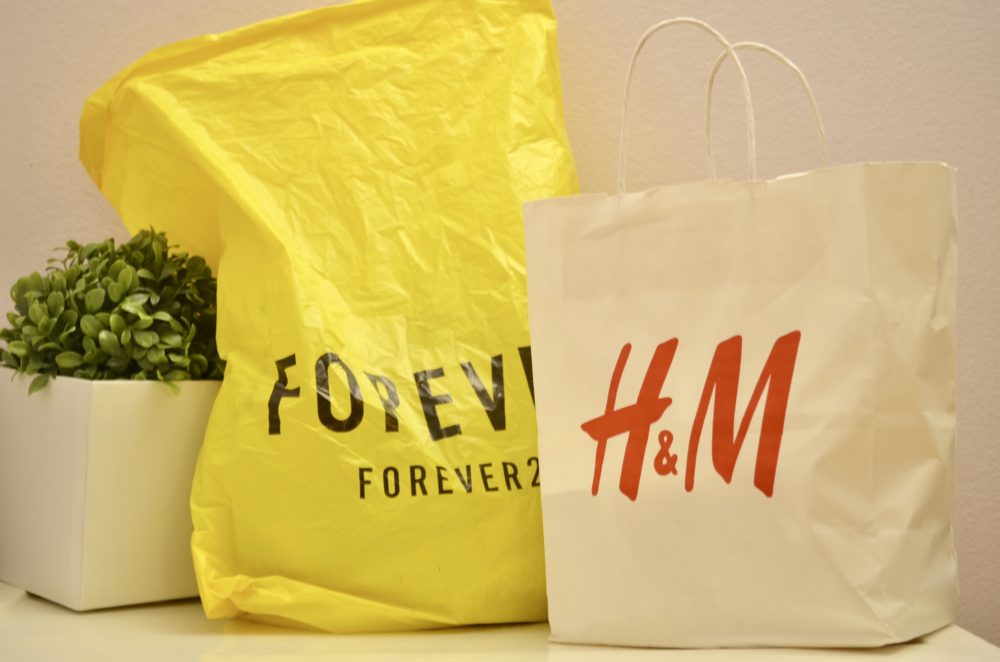
By Camelia Heins, Staff Writer
With the variety of choices for online shopping stores, it’s been easier than ever to buy clothes. It’s also easy to get caught in the grand scheme of things and to be unaware of what’s really going on in the fashion industry. Here’s the ugly truth behind your tags.
What is Fast Fashion?
Fast fashion is the mass production of cheaper and lower quality clothing in order to keep up with the current fashion trends and to better appeal to customers. Quite literally, the process is fast as companies produce clothing that applies to every fashion trend out there as well as often replicating clothing straight off the runway to get straight into the stores.
Although the process may seem cost effective and time efficient, there are many aspects of fast fashion that violate basic human rights and harm the environment.
Why is it harmful?
Fast fashion companies outsource their clothing from other countries in which sweatshops are often used for manufacturing.
These sweatshops pay their workers insufficient wages for their labor and usually put them through harsh conditions as well.
Sweatshops like these can be found all over the world, including in Bangladesh, China, Cambodia and even the United States.
Recently, Forever 21 caught fire for paying workers less than minimum wage in Los Angeles and implementing working conditions similar to sweatshops abroad. According to the LA Times, factories are able to keep prices low by relying on immigrant workers who are unknowingly paid below the minimum wage.
Along with Forever 21, Zara and H&M are infamous fast fashion companies. Both Zara and H&M outsource their clothing manufacturing to low-cost producers in Asia and Africa, according to Investopedia.
With horrible working conditions, little pay, and long hours, comes catastrophic accidents. In 2012, a garment factory in Bangladesh suffered through the worst factory fire in the country’s history. Only a year later, a different Bangladesh garment factory collapsed, killing over a thousand workers.
Fast fashion is also incredibly harmful to the environment with 84% of unwanted clothing ending up in landfills in 2012, according to the United States Environmental Protection Agency (EPA).
The clothing-making process itself also releases chemicals and other wastes into nearby water sources. Dyes used in clothing have toxic chemicals that pollute clean water. Using dyes in textiles is the second largest pollutant of clean water in the world, according to the UN Environment. Just the process of dying fabrics alone uses 1.3 trillion gallons a year, according to the World Resources Institute.
One fabric used in clothing, polyester, also releases tiny plastic microfibers which end up in the ocean affecting marine life.
Is it really worth it to have clothing that has such a dangerous impact on other people and the environment?
So, what can you do?
Instead of buying from fast fashion companies, you can buy second-hand or go thrifting. Thrifting is fun, not to mention the thrill you get once you find a good piece for a good price. Buying from thrift shops also makes your clothes unique to you, since it’s unlikely you’ll see anyone wearing what you’re wearing.
Try making your own clothes or upcycling. Upcycling is a way of recycling your clothing by spicing up your old pieces into new ones.
Invest in better quality clothing. Although it may be more expensive now, you will save more money later. You can also try revolving your wardrobe around basic pieces that can be used in any outfit.
Research the companies you plan on buying from. Look where they get their clothing from, if they’re using practical methods of clothing production, or what they’re doing to reduce their impact on the environment. Support the companies that promote sustainability or have sensible pay, hours, and conditions for their workers.
Refrain from buying clothes you don’t need. Make the most out of your clothing by keeping your pieces in good condition for years instead of throwing them away a few months after buying them.





